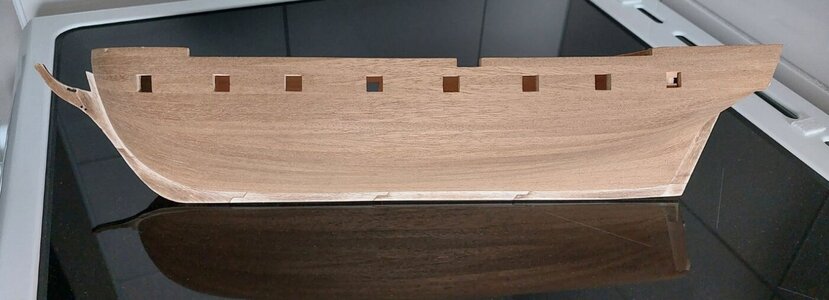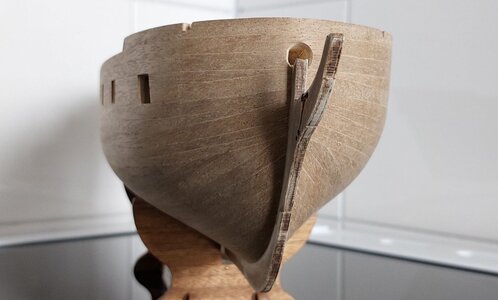Installing the bulwarks and gunport patterns is the next logical step of my Fly's hull assembly. Eack bulwark is represented by two separate pieces that join together just aft of bulkhead nine. This will be a new challenge for me. Not only do the bulwarks bend at near right angles at the stem but they also mould into an 'S' shape laterally against the bulkhead frames.

There is some preparation work before soaking the bulwarks and clamping them in place. Six amidships bulkheads will be reduced to gun deck level after the hull planking is complete, and a partial outboard cut at this point should make it easier to remove them completely later on. A veneer saw is a very useful tool for this exercise, particularly for the full removal process when access to the bulkheads will be severely restricted by the bulwarks.
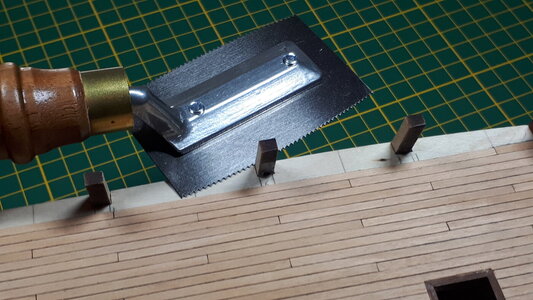
A short length of 10mm-diameter dowel serves to emulate the bowsprit and will provide the key-hole shape of the combined bulwarks with a starting point to position the gun port patterns.
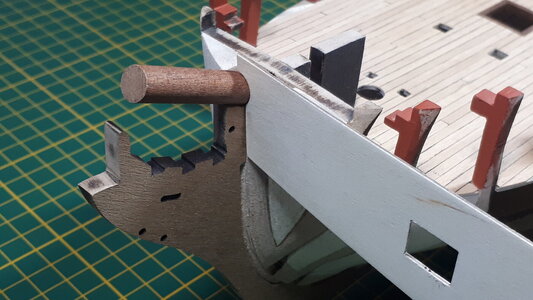
With the upper decks fitted temporarily in place a final sanding is applied to give the bulkhead frames and deck edges a flush contour to receive the gunport patterns.
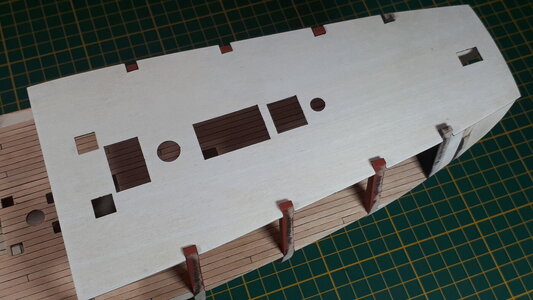
A single gun is assembled to use as a barrel trajectory test of the gun ports. I am using Amati's upgrade pack of wooden carriages that will presumably accomodate rigging better than the kit's original cast metal guns.
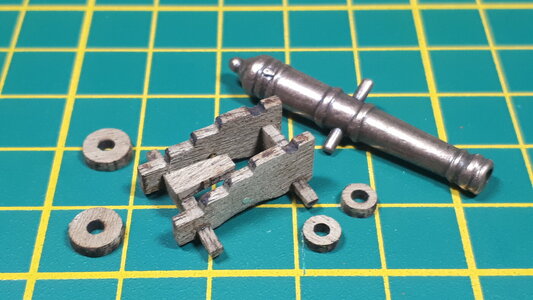
There is more work to be done on the gun of course, but that will come later. Although it did make sense to apply paint before gluing the carriage parts together, especially as more than one colour is being used.
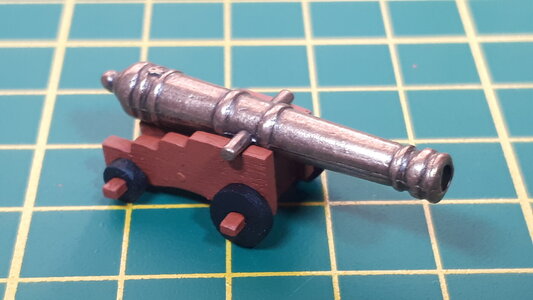
With the top of the bulwarks aligned with the top of the bulkhead frames as advised, the gun ports all passed the barrel trajectory test and I now have no more excuses to delay the dreaded bending, clamping and glueing of the gun port patterns.
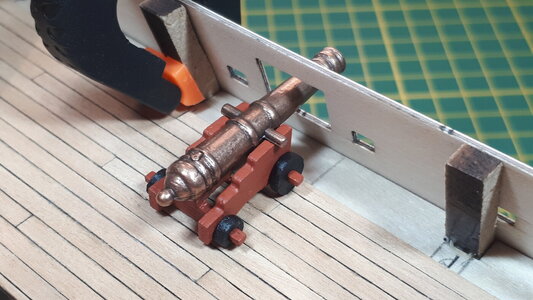

There is some preparation work before soaking the bulwarks and clamping them in place. Six amidships bulkheads will be reduced to gun deck level after the hull planking is complete, and a partial outboard cut at this point should make it easier to remove them completely later on. A veneer saw is a very useful tool for this exercise, particularly for the full removal process when access to the bulkheads will be severely restricted by the bulwarks.

A short length of 10mm-diameter dowel serves to emulate the bowsprit and will provide the key-hole shape of the combined bulwarks with a starting point to position the gun port patterns.

With the upper decks fitted temporarily in place a final sanding is applied to give the bulkhead frames and deck edges a flush contour to receive the gunport patterns.

A single gun is assembled to use as a barrel trajectory test of the gun ports. I am using Amati's upgrade pack of wooden carriages that will presumably accomodate rigging better than the kit's original cast metal guns.

There is more work to be done on the gun of course, but that will come later. Although it did make sense to apply paint before gluing the carriage parts together, especially as more than one colour is being used.

With the top of the bulwarks aligned with the top of the bulkhead frames as advised, the gun ports all passed the barrel trajectory test and I now have no more excuses to delay the dreaded bending, clamping and glueing of the gun port patterns.

Last edited:







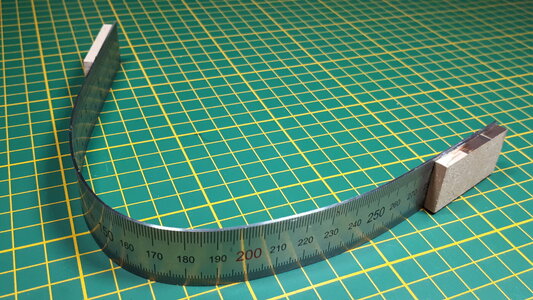
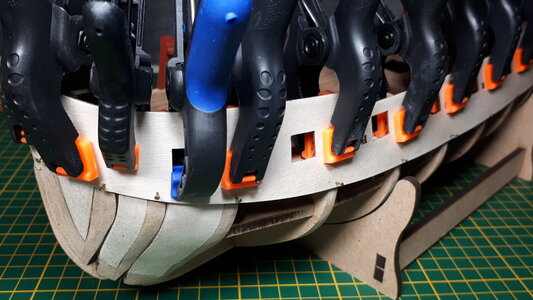
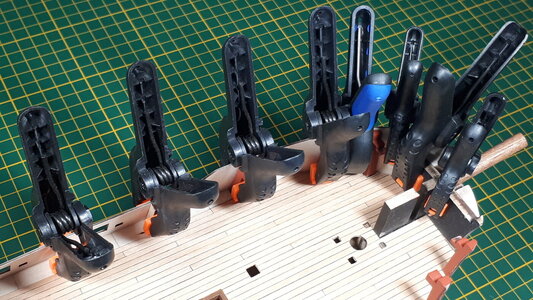

 (Phew!)
(Phew!)